Journal of Civil Engineering and Environmental Sciences
Report on Italy Earthquake (24th August 2016)
Taranjot Singh*
Cite this as
Singh T (2017) Report on Italy Earthquake (24th August 2016). J Civil Eng Environ Sci 3(1): 018-021. DOI: 10.17352/2455-488X.000016On 24 August 2016, a magnitude of 6.2 earthquake hit the Apennines Mountains in central Italy, devastating the small towns of Amartrice, Accumoli and Pescare del Tronto. At least 293 lives were lost. This is the latest in a series of heavy earthquakes to hit Italy in recent years. The country is particularly exposed to earthquakes risk as it is located where continental plates collide and building stock is vulnerable. Yet just over 1% of residential buildings are insured against earthquakes. How can Italy and its residents better prepare for future events?
Introduction
Seismology is the study of the generation, propagation and recording of elastic waves in the earth, and the sources that produce them (Table 1) [1]. An earthquake is a sudden tremor or movement of the earth’s crust, which originates naturally at or below the surface. The word natural is important here, since it excludes shock waves caused by nuclear tests, man-made explosions, etc. About 90% of all earthquakes result from tectonic events, primarily movements on the faults. The remaining is related to volcanism, collapse of subterranean cavities or man-made effects. Tectonic earthquakes are triggered when the accumulated strain exceeds the shearing strength of rocks. An earthquake, measuring 6.2 ± 0.016 on the moment magnitude scale, hit Central Italy on 24 August 2016 at 03:36:32 CEST (01:36 UTC). Its epicenter was close to Accumoli, with its hypocenter at a depth of 4 ± 1 km, approximately 75 km (47 mi) southeast of Perigua and 45 km (28 mi) north of L’Aquila , in an area near the borders of the Umbria, Lazio, Abruzzo and Marche regions. Around 267 people were killed and nearly 1000 after quakes have rocked the area in the two days since the original quake (Figure 1).
Geology that causes Italy’s spine to quakes
The Earth’s shell is divided into several major tectonic plates. Southern Italy is very close to the line where the Eurasian and African plates meet and constantly grate against each other creating seismic and volcanic tension. Italy’s major volcanoes such as Etna, Stromboli and Vesuvius lie close to this fault. In addition, Italy has a series of smaller fault lines, particularly along the Appenine Mountains. The Apennine range, or Apennines Mountains, is a mountain range that runs from north to south along the country, “essentially like a geological spine of Italy,” says De Angelis. Relatively shallow earthquakes are fairly common along the entire length of these mountains due to the number of faults which run along the range, which can rupture and cause earthquakes.
Over the last 2,000 years, more than 400 destructive earthquakes have been documented in Italy. There have been 15 major earthquakes in the country since 1905, the worst being the 1908 Messina earthquake in southern Italy which had a magnitude of 7.1 and claimed 70,000 lives (Figure 2).
Cause of Earthquake Viz. Plates that caused shaking on Wednesday, 24th August, 2016
The powerful earthquake ripped through central Italy on Wednesday, killing hundreds and leaving thousands homeless. The 6.2 magnitude earthquake has killed at least 241 people, the country’s civil protection agency said on Thursday morning after rescue efforts continued through the night. The central Apennines is one of the most seismically active areas in Italy. The Apennines mountain belt were formed in the Miocene to Pliocene as a result of the ongoing subduction of the Adriatic Plate beneath the Eurasian Plate, forming a fold and thrust belt. During the Quaternary, thrust tectonics gave way to extensional tectonics, with the development of a zone of normal faulting running along the crest of the mountain range. The extension is a result of either subduction rollback or the opening of the Tyrrhenian Sea. In the Central Apennines the zone of extension is about 30 km wide, closely matching the zone of observed extensional strain as shown by GPS measurements. Recent large earthquakes in this area have been caused by movement on SW-dipping normal faults (Figure 3).
Reason behind conflict regarding magnitude of earthquake
The earthquake was initially reported by INGV to have occurred at a depth of approximately 5 km (3.1 mi), with a magnitude of 6.0 Mw and epicenter in the comune of Accumoli. The USGS first reported an earthquake at a depth of 10.0 km (6.2 mi) with a magnitude of 6.4 Mw and epicenter southeast of Norcia, but subsequently revised the magnitude to 6.2 Mw. The European-Mediterranean Seismological Centre put the magnitude at 6.1. The discrepancies between the different estimates of the magnitude led INGV to explain in a blog post that they use a crustal velocity model specifically calibrated for Italy and give more weight to the seismometric stations situated close to the epicenter. Using global models, INGV further stated that it can reproduce the values reported by foreign agencies [2].
Shortcomings in seismic design concepts that led to such devastation [3]
Italy is a developed country; it has a long history of earthquakes and a network. The real culprit is poor commitment to building hardened infrastructure. A large portion of the country’s buildings date to the decades after World War II, when the population was booming, but construction codes didn’t yet account for seismic hazards. While laws were updated in the 1970s, many of them have been ignored, even for hospitals and schools. Recently constructed buildings often fail disproportionately when the ground starts shaking. Major example supporting the above statement is a school building that promised to withstand powerful earthquakes after a 700,000-euro upgrade just four years ago has been left in ruins in central Italy, while a 13th century church bell tower managed to withstand the shock. The Romolo Capranica School in Amatrice was supposed to have been quake-proofed but completely collapsed on Wednesday when a catastrophic 6.2-magnitude quake struck at 3.30am local time. That was in sharp contrast to the oldest building in the town, the 13th-century Civic Tower, which was still standing on Thursday, despite having been shaken sufficiently to detach its bell from its fastenings (Figure 4).
Role of italian national agency for new technologies, energy and sustainable economic developmet (ENEA) to counter seismic hazards [4]
Italy is one of the leading countries in the world for number of seismic isolated structures – it ranks fifth after much more densely populated countries such as Japan, China, Russia, the United States – and it’s first in Europe for the application of isolation and energy dissipation systems to buildings, bridges and viaducts. Italy leads the world in terms of anti-seismic devices for the protection of cultural heritage. However, as regards seismic safety of the domestic building stock, there still are many critical situations: in fact, “over 70% of the buildings wouldn’t withstand the earthquakes that can hit them, including schools, hospitals and many other strategic structures”. ENEA gave its contribution to the restoration of the Basilica Superiore di San Francesco d’Assisi, following damage from the 1997-98 earthquake in Umbria and Abruzzi. The Special Issue “100 years of Seismic Engineering”, published on the 100th anniversary of the earthquake in Avezzano that on 13 January 1915 caused 30 thousand casualties and destroyed around 20 towns, enhances the Nation’s technological excellence but also its building fragility and the necessity for an effective prevention policy. The ENEA special issue makes a distinction between new and existing structures: for the first there are technical solutions to be applied in order to construct buildings, bridges and infrastructures capable to withstand even major earthquakes. “Modern anti-seismic technologies can guarantee a degree of safety that traditional techniques can’t provide, with no additional cost“, the experts say. As for existing structures, when possible “a greater use of modern technologies, especially as concerns seismic isolation, would be advisable” particularly for countries like Italy where, the experts say, “most of the buildings can’t stand up to the level of seismic activity established by the current regulation for new buildings in their respective sites”. Most of our buildings are over 50 years old and were built hurriedly and without appropriate controls; this facilitated the use of poor quality materials and poor construction methods-Paolo Clemente, the ENEA expert author of the special issue points out- In addition, incorrect architectural and/or structural interventions have often accelerated the effects of aging and degradation, worsened by poor, or lack of, maintenance. On the other hand, in Italy there are over 400 seismic isolated buildings and artistic heritage assets-such as the Bronzi di Riace, which stand on an anti-seismic basement developed by ENEA which, together with the Politecnico di Torino, has also patented an anti-seismic system for complex structures. Hence the need, the experts warn, of an effective prevention policy based on a sound budgeting and action plan and the definition of priorities regarding hazard and the structural conditions of buildings, particularly for strategic structures such as schools, hospitals, prefectures, barracks.
Modern methods adopted to make buildings and Infrastructures resistant to earthquakes [5]
As of today, there are mainly three ways: the conventional method consists in making the structure strong enough to be able to withstand the strongest earthquake which is likely to occur at its site, another envisages the application of seismic isolation devices dramatically reducing the seismic forces transmitted from the ground to the structure, and the third incorporates both methods. Seismic isolation systems allow for much higher safety levels: a new seismic isolated building (if designed properly) can survive a potentially devastating seismic impact, also preserving its contents. It’s generally possible to install seismic isolation systems in new buildings and, in medium and high seismic areas, if well designed, with no additional construction costs. Globally, in 2013 the number of seismic isolated structures was over 23.000 in more than 30 countries: bridges and viaducts, civil and industrial buildings, facilities, including nuclear and chemical plants at risk of major accidents. The materials employed range from reinforced concrete to steel and even wood (Figure 5). Italy has a leading position in Europe in the use of isolation and energy dissipation systems in buildings, bridges and viaducts and has strengthened its role after the Abruzzi earthquake in 2009: in the city of l’Aquila alone, the new buildings isolated with life-saving systems are more than one hundred, both new constructions and retrofitted existing buildings. Italy also holds a leading position globally in the use of AS systems for the protection of cultural heritage, having developed major projects in this sector; moreover, systems manufactured in Italy are also used in other countries, like Cyprus, Russia, Indonesia, Iran, Greece, Portugal, Spain, and Turkey and so on.
Japan still ranks first for total number of AS systems, which are steadily increasing (in mid - 2011 the isolated buildings were around 6.600 and those with dissipative systems around 3.000). However, already in 2013, China was moving up the chart, followed by Russia, the US and Italy [6-8].
The experts point out, however, that in order to ensure real life-saving protection and avoid the risk of making the structure less safe than it was originally, seismic systems must be correctly designed and installed and this is particularly true “for isolators, they must be accurately selected, designed, manufactured, verified, installed, protected and inspected, making sure their design features remain unchanged during the entire useful life of the structure”.
- Pankaj Agarwal, Manish Shrikhande, “Earthquake Resistant Design of Structures”.
- Time.com.
- bbc.co.uk.
- ENEA, Italy.
- Wikipedia.
- www.swissre.com.
- www.telegraph.co.uk.
- www.thelocal.it.
Article Alerts
Subscribe to our articles alerts and stay tuned.
 This work is licensed under a Creative Commons Attribution 4.0 International License.
This work is licensed under a Creative Commons Attribution 4.0 International License.
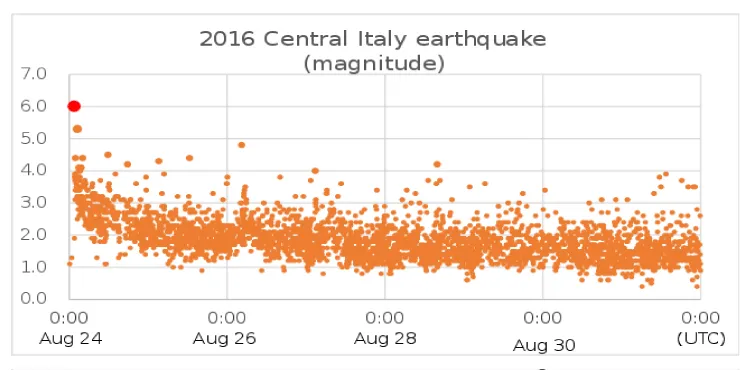
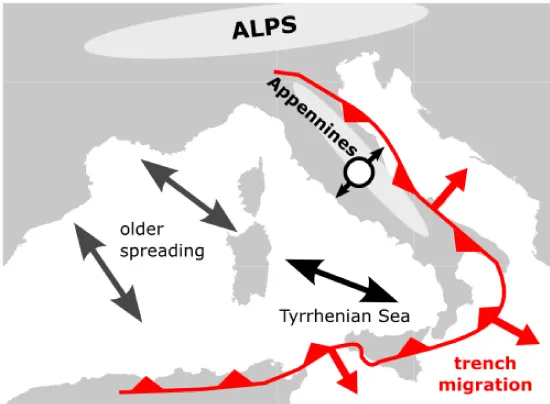
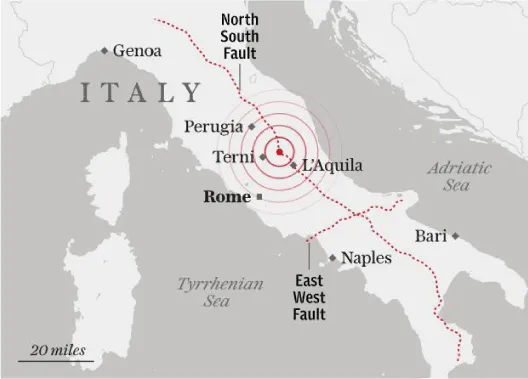
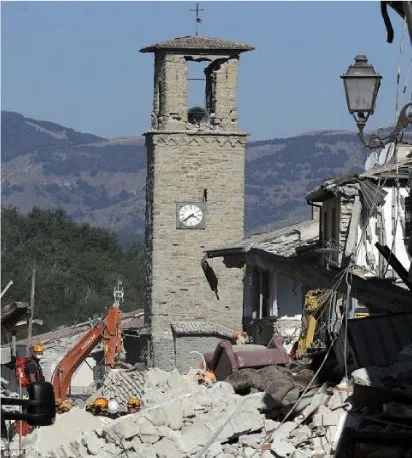
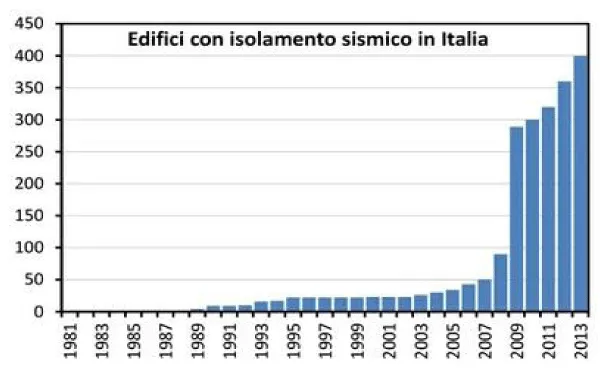

 Save to Mendeley
Save to Mendeley
